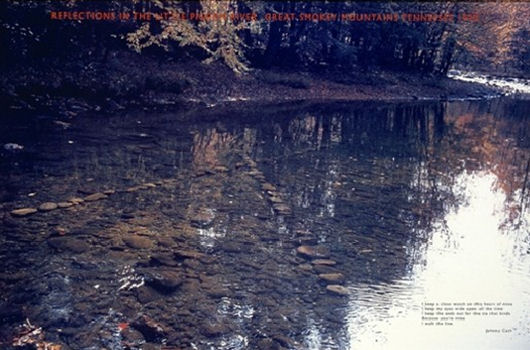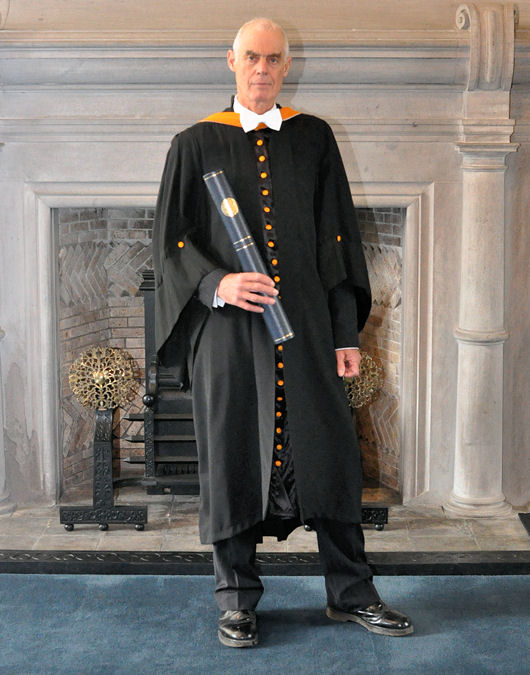Laureation address - Richard Long
St Andrews Day 30 November 2010 Graduation ceremony
Laureation delivered by John Haldane, Professor of Philosophy, University of St Andrews
Vice-Chancellor, it is my privilege to present Richard Long for the degree of Doctor of Lettershonoris causa.
It is given to few creative figures to change the way we see the world. But considering the literal meaning of that expression, it is perhaps unsurprising that one of the main areas in which this rare gift has been found, is in relation to the visual encounter with nature.
No-one who has been enchanted by the sculpted skies and folded earth of Poussin, been cheered by the ever-fruitful fields and woods of Constable, or felt purified by the chilled terrain of Caspar David Freidrich, can then have failed to see the world anew in terms of these artists’ imaginative constructions.
So it is with the work of Richard Long. The history of English art and landscape has a new chapter owing largely to his decision, when barely in his twenties, to make nature not only the subject but the medium of his art. Through walking across, marking, gathering and separating the very materials of the world, Richard Long has produced work of intense beauty and effected a revolution in art-making.
One example must suffice: Reflections in the Little Pigeon River, Great Smokey Mountains Tennessee, 1970, consists of an ‘X’ made of flat river-bed stones in a shallow bay. The poetic resonance of these resting geometrically configured, just below the surface in which sky and trees are reflected, is one thing. That this might also be a ‘crossing place’ adds a pleasing note of whimsy; but the fact that in this sculpture two modes of representation of nature – the pictured scene, and the marked map - are eliminated in favour of reality itself, established an irreversible turning point in the tradition of landscape in Western art.

Richard Long was born in Bristol in 1945 and educated at the West of England College of Art and at St Martin’s School of Art in London. In 1968 he both completed his studies and had his first solo exhibition, in Germany. The following year he exhibited in Paris, Milan and New York, and again twice in Germany. Thereafter he has had some 250 solo exhibitions worldwide, including at the Guggenheim and at the Museum of Modern Art in New York, the Guggenheim in Bilbao, the Hayward and the Tate Galleries in London, Liverpool and St Ives, the National Galleries of Australia, Canada, Japan and South Africa and on three occasions at the Scottish National Gallery of Modern Art in Edinburgh. Long has represented Britain in the Venice, and Sao Paolo, Biennale, won the Turner Prize, the Kunstpreis Aachen, the Lehmbruck Prize, and the Praemium Imperiale of Japan, as well as being awarded Chevalier de l’Order des Arts et des Lettres by the Government of France.
In his work and in its recognition Richard Long is an international artist, but he also has local and regional attachments. He continues to live and work near to Bristol and has returned repeatedly to the wilds of Scotland to walk and make art. In 1997 he assisted students on the Museum and Galleries Studies course at St Andrews in a documentary exhibition of his work, and several pieces currently hang in the Art History department here.
Richard Long once described his art as being ‘a portrait of the artist touching the earth’. We hope that in the future he will return to this particular corner of Scotland’s portion of that dear earth, but for now we honour and celebrate the work of the man widely regarded as Britain’s greatest living artist.
Vice-Chancellor, in recognition of his major contribution to the visual arts, I invite you to confer on Richard Long the Degree of Doctor of Letters honoris causa.
